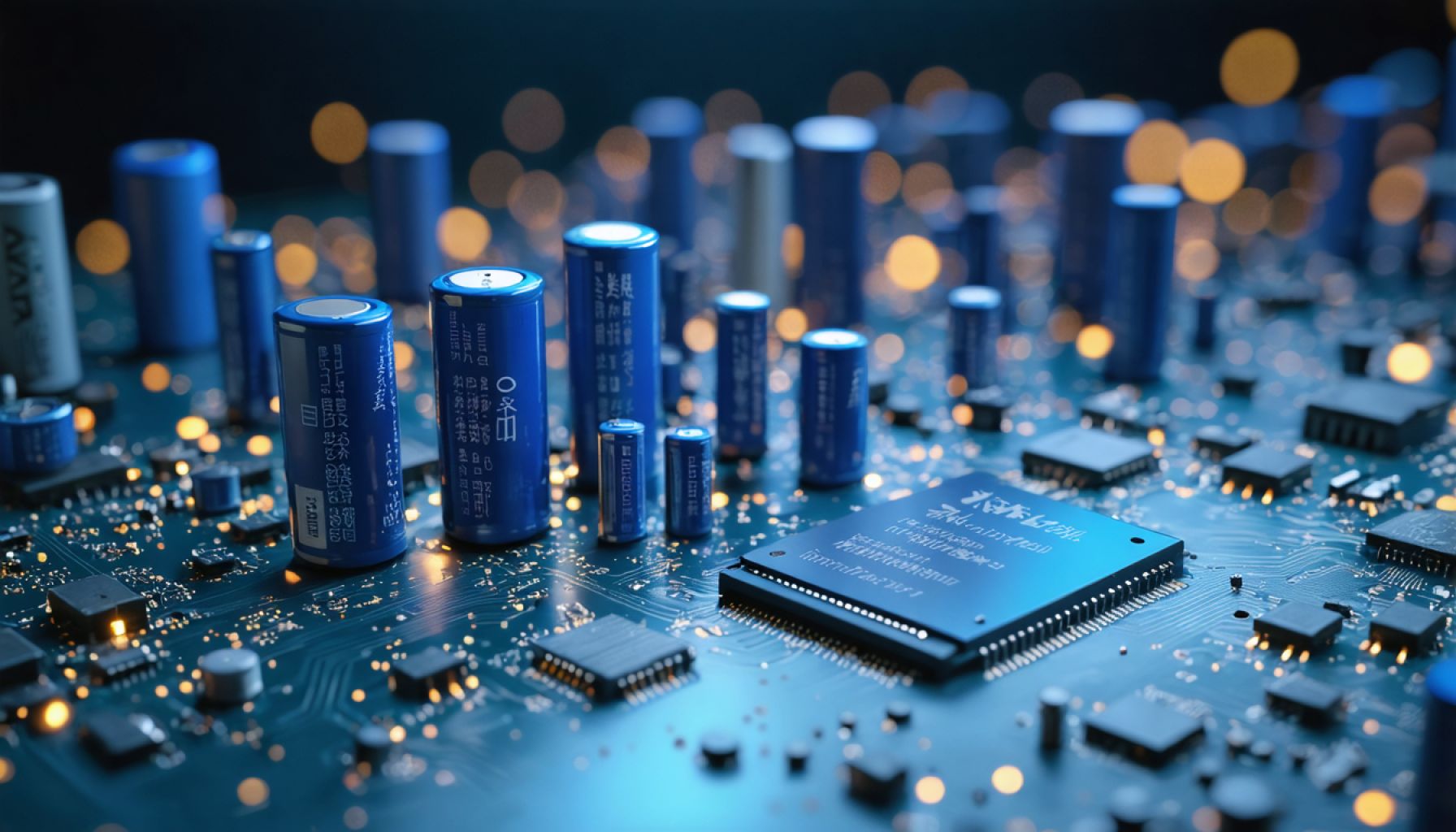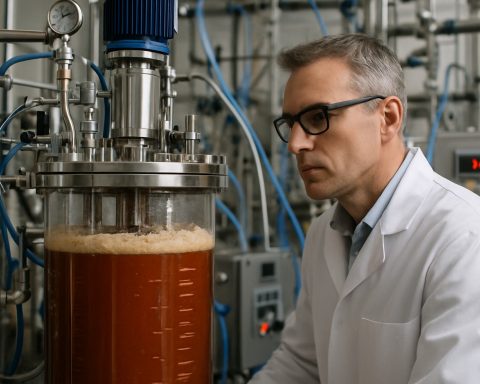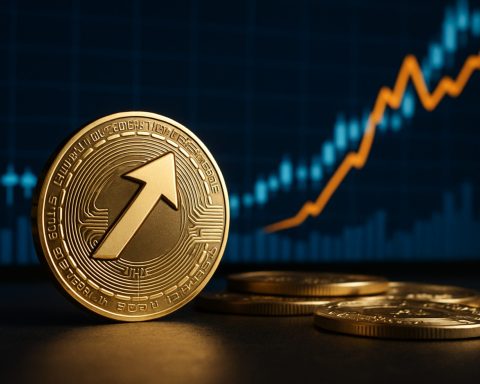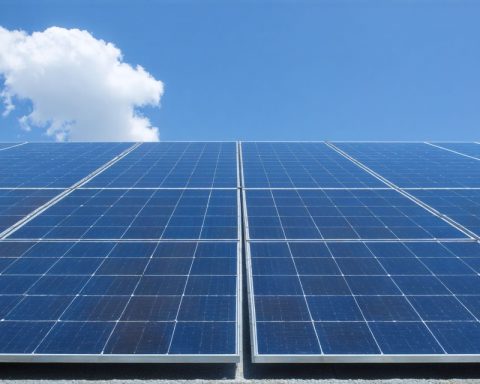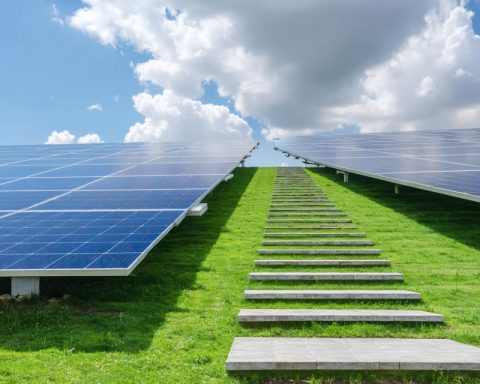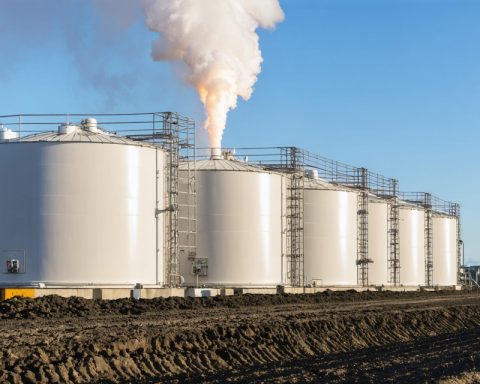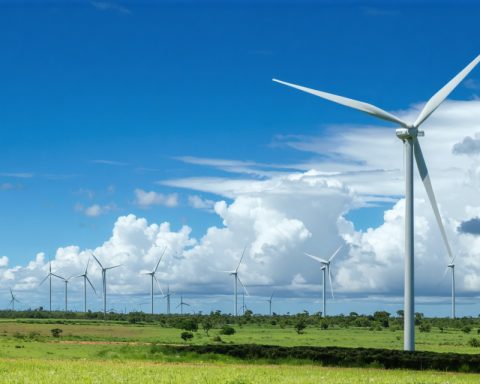- Jinlongyu Group invests CNY1.2 billion in establishing a solid-state battery production base in Huizhou, Guangdong province.
- Solid-state batteries offer benefits of higher energy density and improved safety compared to liquid-electrolyte counterparts but face manufacturing challenges.
- Jinlongyu’s strategic partnership and breakthroughs position them well in the solid-state battery sector, signaling a bold and calculated industry move.
- Despite financial pressures, including decreased net profit and revenue, Jinlongyu aims to lead a technological revolution in energy storage.
- The venture underscores a broader push for innovation in China’s tech and manufacturing sectors amid rising demand for efficient energy solutions.
- The initiative represents a brave step toward shaping the future of energy storage, echoing the idea that those who build the future will own it.
The glittering skyline of Shenzhen, a symbol of modern China’s rapid industrial development, now frames an audacious vision for the future of energy storage. Jinlongyu Group, a prominent name in wire and cable manufacturing, is pivoting into the nascent field of solid-state battery technology with a commanding commitment: an investment of CNY1.2 billion (USD160 million) to establish a production base in Huizhou, Guangdong province.
This venture promises a step into uncharted territories where the promise of solid-state batteries — smaller, more powerful, and inherently safer than their liquid-electrolyte counterparts — is enticing but fraught with complex manufacturing challenges. The allure of these batteries lies in their potential to redefine energy density and ensure heightened safety for lithium-ion applications. Yet, the technology is mired in high production costs and technical obstacles that have, until now, kept wider commercial application at bay.
Yet, Jinlongyu’s hands are not empty of cards. Their strategic partnership, forged in 2021 with a firm spearheaded by the renowned Li Xinlu, hints at a calculated gambit rather than a blind leap. Through collaborative expertise, Jinlongyu has already achieved breakthroughs in synthesizing and validating solid-state battery materials. This internal progress, meticulously documented in their financial reports, marks the company’s leap into the fray not as a tentative step but as a confident stride.
The financial weather, however, tells a different story for Jinlongyu. Despite the electrifying announcement, their latest earnings report cast a sober light, revealing a dip in both net profit and revenue. An array of market pressures, including a slowdown in engineering construction and fierce competition within their core wire and cable sectors, have ruffled their financial feathers. Nevertheless, Jinlongyu now stakes its future on transforming adversity into opportunity, harnessing its resources to be at the forefront of a potential battery revolution.
For the broader market, Jinlongyu’s ambitious project serves as a catalyst and a clarion call to innovation in China’s tech and manufacturing realms. As the global demand for more efficient and safer energy storage solutions escalates, the courage to leap into the unknown could define the industry’s winners and losers.
Thus, as the construction cranes rise and diggers churn the earth in Huizhou, Jinlongyu stands as a testament to a dictum as old as industry itself: The future belongs to those who dare to build it.
Jinlongyu’s Leap into Solid-State Batteries: A Game Changer for Energy Storage?
In the fast-paced metropolis of Shenzhen, where technological innovations shape the skyline, Jinlongyu Group is embarking on a transformative journey into solid-state battery technology. Here’s an in-depth look into this ambitious foray, highlighting what this move entails, the challenges, potential benefits, and insights into the future of energy storage.
Unpacking Solid-State Battery Technology
Solid-State vs. Conventional Batteries:
– Higher Energy Density: Solid-state batteries promise up to double the energy capacity of traditional lithium-ion batteries.
– Enhanced Safety: By replacing the liquid electrolyte with a solid one, they reduce risks of leaks and fires.
– Longer Lifespan: These batteries potentially offer more charge cycles due to their stable structure.
Manufacturing Challenges:
– High Costs: Despite the advantages, the production process is currently expensive due to the need for precise manufacturing and specialized materials.
– Technical Hurdles: Achieving uniformity and scalability in production remains a significant obstacle, necessitating further research and development.
Jinlongyu’s Strategy and Market Impact
Strategic Partnerships:
– Jinlongyu’s collaboration with industry expert Li Xinlu is a strategic move, enabling the company to leverage advanced knowledge and technology for breakthroughs in battery material synthesis.
Market Outlook and Industry Trends:
– The global market for solid-state batteries is projected to grow significantly, with estimates pointing towards a billion-dollar industry by 2030 (Source: MarketsandMarkets).
– Electric vehicles (EVs) and renewable energy storage are anticipated to be primary drivers of this growth, as demand for efficient and sustainable energy solutions rises.
Potential Benefits and Limitations
Pros:
– Innovative Edge: Companies investing in solid-state technology are likely to gain a competitive advantage in the burgeoning EV market.
– Environmental Impact: Solid-state batteries are expected to produce less waste and have a lower environmental footprint compared to traditional batteries.
Cons:
– Economic Risks: The financial investment required is substantial, and there’s no guaranteed immediate return on investment due to the high cost and complexity of technology.
– Market Competition: As more companies enter the field, maintaining a technological lead becomes crucial yet challenging.
Insights & Recommendations
Security & Sustainability: With emphasis on sustainability, industries are urged to adopt and innovate in solid-state battery technology to reduce dependency on fossil fuels and support greener initiatives.
Actionable Tips for Stakeholders:
1. Invest in R&D: Prioritizing research can expedite overcoming technical barriers.
2. Form Alliances: Collaborations can provide shared expertise and resources, enhancing innovation.
3. Monitor Trends: Stay informed on global advancements and consumer demands to pivot strategies effectively.
Conclusion: Jinlongyu’s substantial investment in solid-state battery technology is a bold move that could revolutionize the battery industry, given the right conditions and innovations. As they rise to the challenge, their progress could serve as a catalyst for the broader energy storage market, driving further innovation and sustainability.
For further reading on the latest in technological innovations and energy solutions, visit the Jinlongyu Group’s website.
By pioneering this frontier, Jinlongyu and similarly ambitious companies may well set the stage for a new era in energy systems. As the market adapts and grows, the firms willing to invest in and develop solid-state battery technology are likely to reap significant rewards in the years to come.
